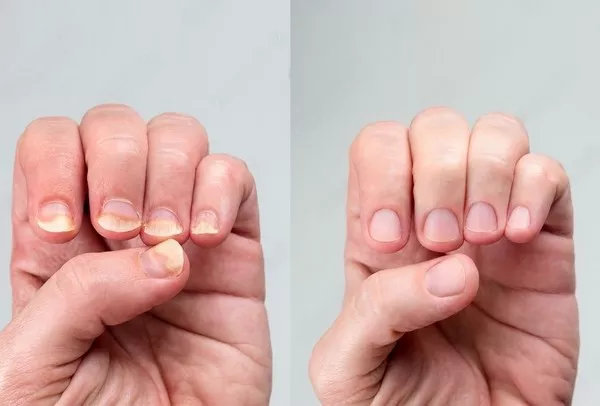Psoriatic arthritis is a complex autoimmune condition that not only affects the joints but can also impact the skin and nails. For individuals living with this condition, nail changes can be a prominent and distressing symptom. Understanding the relationship between psoriatic arthritis and nail health is crucial for both patients and healthcare providers.
The Link Between Psoriatic Arthritis and Nail Involvement
Psoriatic arthritis is characterized by inflammation in the joints and surrounding tissues, often accompanied by skin manifestations such as psoriasis. Approximately 80% of individuals with psoriatic arthritis develop nail changes, making it a common feature of this disease. These nail changes can occur at any stage of psoriatic arthritis and may even precede joint symptoms in some cases.
Types of Nail Changes in Psoriatic Arthritis
The nail changes associated with psoriatic arthritis can vary widely and may include:
1. Nail Pitting: One of the most common nail changes seen in psoriatic arthritis is nail pitting. Pits or small depressions develop on the surface of the nails, resembling the surface of a thimble.
2. Nail Discoloration: Nails affected by psoriatic arthritis often exhibit discoloration, appearing yellowish-brown or reddish. This discoloration can be a result of blood vessel alterations or psoriatic involvement.
3. Nail Thickening: Psoriatic arthritis can cause thickening of the nails, known as onycholysis. This thickening can lead to discomfort and difficulty with nail care.
4. Nail Separation: Onycholysis, or separation of the nail from the nail bed, is another common nail change seen in psoriatic arthritis. This separation can cause pain and increase the risk of secondary infections.
5. Nail Ridging: Vertical ridges may appear on the nails due to the inflammation affecting nail growth. These ridges can cause the nails to appear uneven and brittle.
6. Nail Crumbling: In severe cases, the nails may start to crumble or break easily, leading to functional impairment and pain.
Mechanisms of Nail Involvement in Psoriatic Arthritis
The exact mechanisms underlying nail changes in psoriatic arthritis are not fully understood. However, researchers believe that a combination of genetic predisposition and immune system dysregulation plays a significant role. The inflammation associated with psoriatic arthritis can directly affect the nail matrix, where nail cells are produced, leading to abnormal nail growth and appearance.
Additionally, the involvement of certain cytokines (proteins involved in cell signaling) such as tumor necrosis factor-alpha (TNF-alpha) and interleukin-17 (IL-17) is thought to contribute to nail pathology in psoriatic arthritis. These cytokines are known to play a central role in the inflammatory processes observed in both psoriasis and psoriatic arthritis.
Importance of Recognizing Nail Changes in Psoriatic Arthritis
Identifying and understanding nail changes in psoriatic arthritis is essential for several reasons:
1. Early Diagnosis: Nail involvement can sometimes precede other symptoms of psoriatic arthritis. Recognizing these changes can lead to earlier diagnosis and intervention, potentially preventing joint damage and improving outcomes.
2. Disease Monitoring: Monitoring nail changes can serve as a valuable marker for disease activity and treatment response. Changes in nail appearance may indicate worsening or improvement of psoriatic arthritis.
3. Impact on Quality of Life: Nail changes can significantly impact a person’s quality of life, affecting daily activities and self-esteem. Addressing these changes as part of comprehensive care is essential for holistic management.
Differential Diagnosis and Treatment Considerations
Nail changes in psoriatic arthritis can resemble those seen in other conditions such as fungal infections or other types of inflammatory arthritis. Therefore, a thorough evaluation by a dermatologist or rheumatologist is necessary for accurate diagnosis and appropriate treatment.
Treatment of nail involvement in psoriatic arthritis often involves a multidisciplinary approach, including topical treatments, systemic medications (such as disease-modifying anti-rheumatic drugs), and biologic therapies targeting specific inflammatory pathways. In some cases, surgical interventions may be considered for severe nail deformities.
Conclusion
In conclusion, nail changes are a common and often distressing manifestation of psoriatic arthritis. Recognizing these changes, understanding their underlying mechanisms, and addressing them as part of comprehensive care are crucial steps in managing this complex autoimmune condition. By raising awareness and promoting early intervention, healthcare providers can significantly improve the quality of life for individuals living with psoriatic arthritis. Ongoing research into the pathophysiology of nail involvement may lead to more targeted therapies and better outcomes for affected patients.
Related Topics:

























